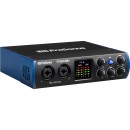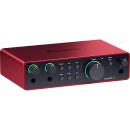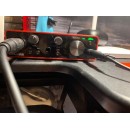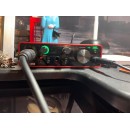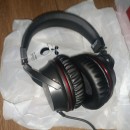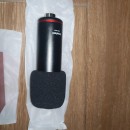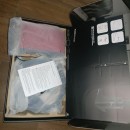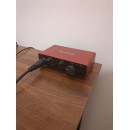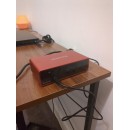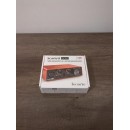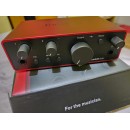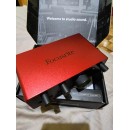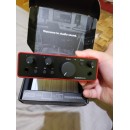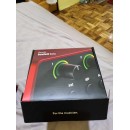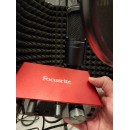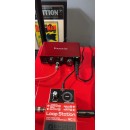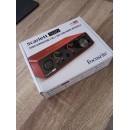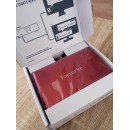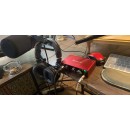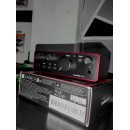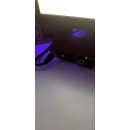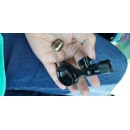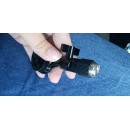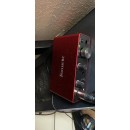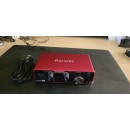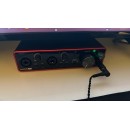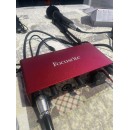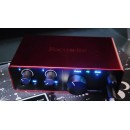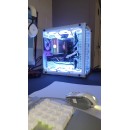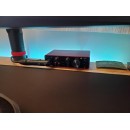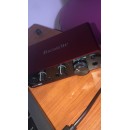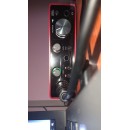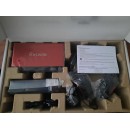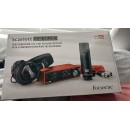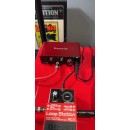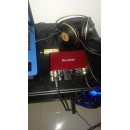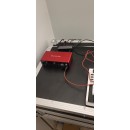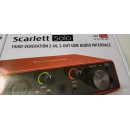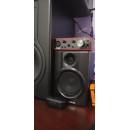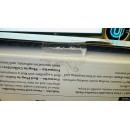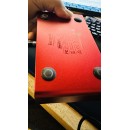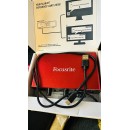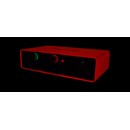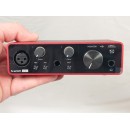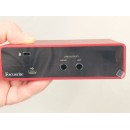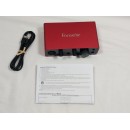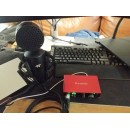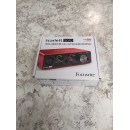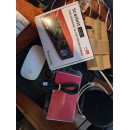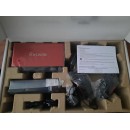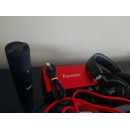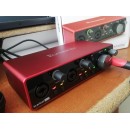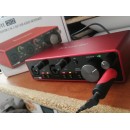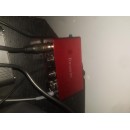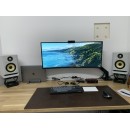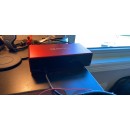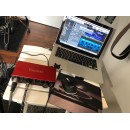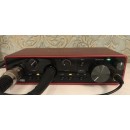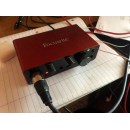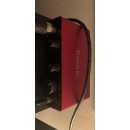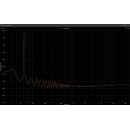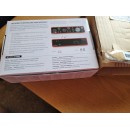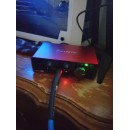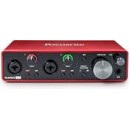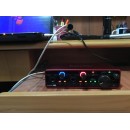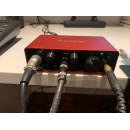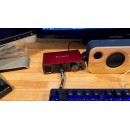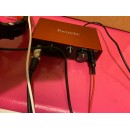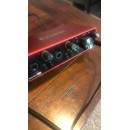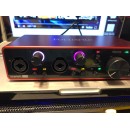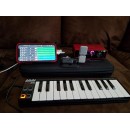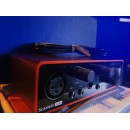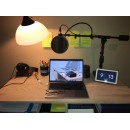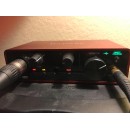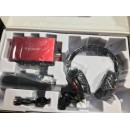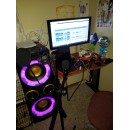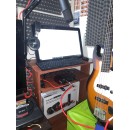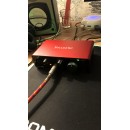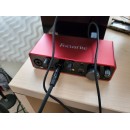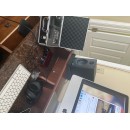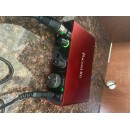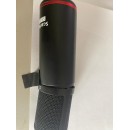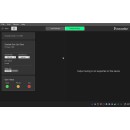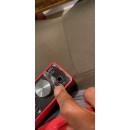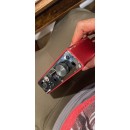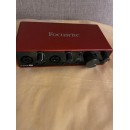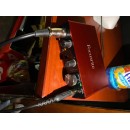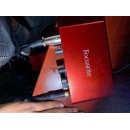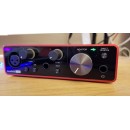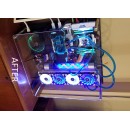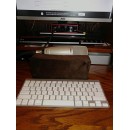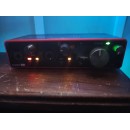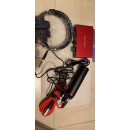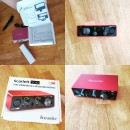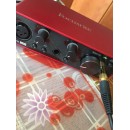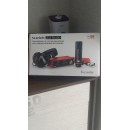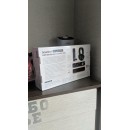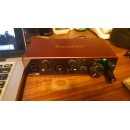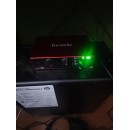PreSonus Studio 24c vs Focusrite Scarlett 2i2: Which Audio Interface is Best for You?
The Focusrite Scarlett 2i2 (4th Gen) continues the legacy of the Scarlett series with improvements in sound quality and usability. It features two high-performance Scarlett mic preamps with switchable Air mode, which emulates the Air effect of Focusrite's original ISA mic preamp, adding brightness and presence to your recordings. The interface supports sample rates up to 192kHz/24-bit, ensuring professional-grade audio quality. The unit also boasts low-latency performance, making it ideal for real-time monitoring and recording. With its sturdy build and intuitive design, the Scarlett 2i2 is user-friendly and reliable for various recording applications.
On the other hand, the PreSonus Studio 24c is a versatile audio and MIDI interface that excels in both sound quality and functionality. It features XMAX-L mic preamps renowned for their clarity and dynamic range, along with MIDI I/O for connecting MIDI controllers and other devices. The Studio 24c supports sample rates up to 192kHz/24-bit, ensuring detailed and accurate recordings. It also includes a comprehensive software bundle, including Studio One Artist DAW, making it an attractive option for users looking to dive into music production right out of the box. The robust metal chassis ensures durability, and the interface is designed for easy integration into any studio setup.
Both interfaces offer USB Type-C connectivity, ensuring fast data transfer and compatibility with modern computers. They also provide direct monitoring options, allowing users to hear their input signals without latency. However, the choice between the two may come down to specific needs: the Scarlett 2i2's Air mode and simple, straightforward design may appeal to those seeking ease of use and enhanced vocal recordings, while the Studio 24c's MIDI functionality and comprehensive software package might be more attractive to producers and musicians requiring a more versatile setup.
In conclusion, the Focusrite Scarlett 2i2 (4th Gen) and the PreSonus Studio 24c are both excellent choices for audio recording. The Scarlett 2i2 offers simplicity and high-quality preamps with an added Air mode, making it ideal for vocalists and podcasters. The Studio 24c, with its additional MIDI capabilities and bundled software, provides a more rounded solution for music producers and those looking for an all-in-one package. Each interface brings its own strengths to the table, catering to different aspects of the recording process.
Detailed Specifications, Advantages, and Disadvantages
| User Rating Based on Analysis of Reviews | |
|---|---|
|
Show More |
| Pros: | |
|---|---|
|
|
| Cons: | |
|---|---|
|
|
| Show Price | Show Price |
| Key Specs | |
|---|---|
| Channels of I/O | |
| Analog: 2 Inputs / 2 Outputs at 192 kHz |
Analog: 2 Inputs / 2 Outputs at 192 kHz |
| Maximum Sampling Rate | |
| 192 kHz / 24-Bit | 192 kHz / 24-Bit |
| Number of Microphone Inputs | |
| 2 Preamps | 2 |
| Analog Audio I/O | |
| 2x Combo XLR-1/4" TRS Balanced/Unbalanced Mic/Line/Hi-Z Input 2x 1/4" TRS Balanced Line/Monitor Output 1x 1/4" TRS Unbalanced Headphone Output |
2x XLR 3-Pin Balanced Mic Input 2x 1/4" TRS Balanced/Unbalanced Line/Hi-Z Input (Front Panel) 2x 1/4" TRS Balanced Monitor Output 1x 1/4" TRS Headphone Output (Front Panel) |
| Host Connection | |
| 1x USB-C (Class-Compliant) | 1x USB-C |
| OS Compatibility | |
| macOS 10.13 or Later (64-Bit Only) Windows 10 or Later (64-Bit Only) |
macOS Windows |
| Power Requirements | |
| USB Bus Power | USB Bus Power, USB Power Adapter (Not Included) |
The Focusrite Scarlett 2i2 (4th Gen) provides 2 inputs and 2 outputs at a maximum sampling rate of 192 kHz and 24-bit resolution. It includes 2 microphone inputs, which are balanced XLR 3-pin connectors. Additionally, it features 2x 1/4" TRS balanced/unbalanced line/Hi-Z inputs on the front panel and 2x 1/4" TRS balanced monitor outputs. For monitoring, it provides a 1/4" TRS headphone output on the front panel. The device connects to the host using a USB-C interface and is compatible with both macOS and Windows operating systems. It is bus-powered via USB but also has the option for a USB power adapter, which is not included.
On the other hand, the PreSonus Studio 24c also offers 2 inputs and 2 outputs at the same 192 kHz/24-bit resolution. It features 2 microphone preamps that utilize combo XLR-1/4" TRS connectors for balanced/unbalanced mic/line/Hi-Z input. Its analog audio I/O includes 2x 1/4" TRS balanced line/monitor outputs and a 1/4" TRS unbalanced headphone output. It connects to the host via USB-C and supports macOS 10.13 or later (64-bit only) and Windows 10 or later (64-bit only). Like the Scarlett, it is powered through USB bus power.
While both interfaces are similar in terms of channels, sampling rate, and bit depth, the PreSonus Studio 24c offers the advantage of combo XLR-1/4" TRS inputs, which provide more flexibility for connecting various types of audio sources. Both units are USB-C compatible and bus-powered, ensuring easy and efficient connectivity. The Scarlett 2i2 offers a slightly more diverse range of analog I/O options, whereas the Studio 24c's combo inputs offer a simpler, more versatile input solution. Both are highly compatible with modern operating systems, ensuring they are suitable for professional and home studio environments.
| General | |
|---|---|
| Channels of I/O | |
| Analog: 2 Inputs / 2 Outputs at 192 kHz |
Analog: 2 Inputs / 2 Outputs at 192 kHz |
| Maximum Sampling Rate | |
| 192 kHz / 24-Bit | 192 kHz / 24-Bit |
| Number of Microphone Inputs | |
| 2 Preamps | 2 |
| Input Level Adjustment | |
| 2x Knob | 2x Knob |
| Expansion Slots | |
Despite these similarities, there are notable differences as well. The Focusrite Scarlett 2i2 (4th Gen) does not include built-in DSP (Digital Signal Processing), whereas the PreSonus Studio 24c also lacks this feature, maintaining parity in this regard. Neither interface includes built-in microphones or expansion slots, which aligns them as straightforward, user-friendly devices suitable for basic home studio setups or portable recording needs.
In summary, both the Focusrite Scarlett 2i2 (4th Gen) and the PreSonus Studio 24c are well-matched in terms of their core specifications, offering high-resolution audio, dual microphone inputs, and user-friendly input level adjustments. They are both designed to provide essential functionalities for musicians and producers who require reliable and high-quality audio interfaces without additional built-in DSP or expansion options.
| Signal Processing | |
|---|---|
| Gain/Trim Range | |
| Inputs: 50 dB |
Mic/Line Inputs: Up to +69 dB Hi-Z Inputs: 62 dB |
The Focusrite Scarlett 2i2 (4th Generation) offers a significant gain/trim range across its inputs. For mic/line inputs, it provides up to +69 dB, which is notably high, and for Hi-Z inputs, it offers up to 62 dB. This extensive gain range makes it highly versatile for a variety of audio sources, accommodating both quiet and loud inputs with ease.
In contrast, the PreSonus Studio 24c provides a gain/trim range of 50 dB for its inputs. While this is sufficient for many standard recording situations, it is considerably lower than what the Scarlett 2i2 offers, potentially limiting its flexibility with certain audio sources that require more gain.
Additionally, the PreSonus Studio 24c lacks several features that might be critical for some users. It does not include a pad, which can be useful for managing high-level signals to prevent clipping. Moreover, it does not offer a high-pass filter, which can help in reducing low-frequency noise and rumble. The absence of solo/mute functionality also means that users cannot isolate or mute channels directly on the interface, which could be a drawback for certain monitoring and recording workflows.
In summary, the Focusrite Scarlett 2i2 (4th Generation) stands out with its higher gain/trim range and the versatility it provides. Meanwhile, the PreSonus Studio 24c, while still a capable interface, offers a lower gain range and does not include some additional features such as a pad, high-pass filter, and solo/mute functionality, which might be important for some users depending on their specific needs and recording environment.
| Connectivity | |
|---|---|
| Analog Audio I/O | |
| 2x Combo XLR-1/4" TRS Balanced/Unbalanced Mic/Line/Hi-Z Input 2x 1/4" TRS Balanced Line/Monitor Output 1x 1/4" TRS Unbalanced Headphone Output |
2x XLR 3-Pin Balanced Mic Input 2x 1/4" TRS Balanced/Unbalanced Line/Hi-Z Input (Front Panel) 2x 1/4" TRS Balanced Monitor Output 1x 1/4" TRS Headphone Output (Front Panel) |
| Phantom Power | |
| 48 V, Selectable On/Off (Applied to All Inputs) | 48 V, Selectable On/Off |
| Digital Audio I/O | |
| Host Connection | |
| 1x USB-C (Class-Compliant) | 1x USB-C |
| Host Connection Protocol | |
| USB 2.0 | USB 2.0 |
| USB (Non-Host) | |
| 1x USB-C (Power Input) | |
| Sync I/O | |
| Network I/O | |
| MIDI I/O | |
| 1x DIN 5-Pin Input 1x DIN 5-Pin Output |
|
Analog Audio I/O: The Focusrite Scarlett 2i2 features 2x XLR 3-Pin Balanced Mic Inputs, 2x 1/4" TRS Balanced/Unbalanced Line/Hi-Z Inputs on the front panel, 2x 1/4" TRS Balanced Monitor Outputs, and 1x 1/4" TRS Headphone Output on the front panel. In contrast, the PreSonus Studio 24c offers 2x Combo XLR-1/4" TRS Balanced/Unbalanced Mic/Line/Hi-Z Inputs, 2x 1/4" TRS Balanced Line/Monitor Outputs, and 1x 1/4" TRS Unbalanced Headphone Output. The key difference here is that the PreSonus includes combo inputs that can handle both XLR and 1/4" TRS connections, which offers greater flexibility.
Phantom Power: Both interfaces provide 48V phantom power, which is selectable on/off. The PreSonus Studio 24c specifies that its phantom power is applied to all inputs with a current of 10 mA, while the Focusrite Scarlett 2i2 does not specify the current but allows for selectable phantom power as well.
Digital Audio I/O: Neither the Focusrite Scarlett 2i2 nor the PreSonus Studio 24c features digital audio inputs or outputs, which may be a consideration for users needing digital connectivity.
Host Connection: Both interfaces use a USB-C connection for their host connection protocol and adhere to USB 2.0 standards. The Focusrite Scarlett 2i2 also includes an additional USB-C port for power input, whereas the PreSonus Studio 24c does not have a separate power input.
Sync I/O and Network I/O: Neither interface includes Sync I/O or Network I/O capabilities, which keeps their designs simple and focused on analog and USB connectivity.
MIDI I/O: A significant differentiator is that the PreSonus Studio 24c includes MIDI I/O, with 1x DIN 5-Pin Input and 1x DIN 5-Pin Output, making it a more versatile choice for users who need MIDI connectivity. The Focusrite Scarlett 2i2 lacks MIDI I/O, which might be a limitation for users looking to integrate MIDI devices into their setup.
Wireless: Neither interface offers wireless capabilities, focusing instead on wired connections for reliability and performance.
In summary, the Focusrite Scarlett 2i2 (4th Generation) is a robust choice for users who prioritize high-quality analog audio inputs and outputs, particularly those who do not require MIDI connectivity. On the other hand, the PreSonus Studio 24c stands out with its combo inputs and built-in MIDI I/O, making it a more versatile option for users needing flexibility in input types and MIDI functionality.
| Performance | |
|---|---|
| Frequency Response | |
| Mic Inputs: 20 Hz to 20 kHz ±0.3 dB (Unity Gain) Hi-Z Inputs: 20 Hz to 20 kHz ±0.1 dB (Unity Gain) Monitor Outputs: 20 Hz to 20 kHz ±0.3 dB (Unity Gain) Headphone Outputs: 20 Hz to 20 kHz ±0.5 dB (Unity Gain) |
XLR Mic Inputs: 20 Hz to 20 kHz ±0.06 dB 1/4" Line Inputs: 20 Hz to 20 kHz 0.05 dB 1/4" Hi-Z Inputs: 20 Hz to 20 kHz 0.15 dB |
| Maximum Input Level | |
| Mic Inputs: +10 dBu (Min Gain) Hi-Z Inputs: +19 dBu (Min Gain) |
XLR Mic: 16 dBu 1/4" Line: 22 dBu 1/4" Hi-Z: 12 dBu |
| Maximum Output Level | |
| Monitor Outputs: +10 dBu (Balanced) |
1/4" Line: +16 dBu |
| Headphone Output Power | |
| 47 mW per Channel into 56 Ohms (Max) |
1/4": 32 mW into 33 Ohms 22 mW into 300 Ohms |
| Impedance | |
| Mic Inputs: 1.4 Kilohms Hi-Z Inputs: 750 Kilohms Headphone Outputs: 32 to 300 Ohms |
XLR Mic Inputs: 3 Kilohms 1/4" Line Inputs: 60 Kilohms 1/4" Hi-Z Inputs: 1 Megohms 1/4" Line Outputs: 100 Ohms 1/4" Headphone Outputs: < 50 Ohm |
| Dynamic Range | |
| AD/DA Converters: 108 dB Mic Inputs: 106 dBA Hi-Z Inputs: 105 dBA Monitor Outputs: 104 dB (Unweighted) Headphone Outputs: 83 dBA |
XLR Mic Inputs: 116 dBA 1/4" Line Inputs: 115.2 dBA 1/4" Hi-Z Inputs: 113 dBA 1/4" Line Outputs: 120 dB 1/4" Headphone: 112 dB (at 33 Ohms) 115 dB (at 300 Ohms) Digital A/D Converters: 120 dB Digital D/A Converters: 130 dBA |
| THD+N | |
| Mic Inputs: 0.004% (1 kHz, Min Gain, at -1 dBFS) Hi-Z Inputs: 0.002% (1 kHz, Min Gain) Monitor Outputs: 0.001% (1 kHz, Unity Gain, at -1 dBFS) Headphone Outputs: 0.01% (1 kHz, at 0 dBFS) |
XLR Mic Inputs: -100 dB (at 8 dB Gain) 1/4" Line Inputs: -100 dB (at 8 dB Gain) 1/4" Hi-Z Inputs: -80 dB (at Minimum Gain) 1/4" Line Outputs: -109 dB 1/4" Headphone Outputs: -99 dB (at 33 Ohms) -108 dB (at 300 Ohms) Digital A/D Converters: -110 dB Digital D/A Converters: -115 dB |
| EIN | |
| Mic Inputs: -126 dBu A-Weighted |
XLR Mic Inputs: -127 dBu A-Weighted |
In terms of frequency response, the Focusrite Scarlett 2i2 offers impressive precision across its input types. The XLR Mic Inputs boast a frequency response of 20 Hz to 20 kHz within ±0.06 dB, while the 1/4" Line Inputs offer a slightly tighter ±0.05 dB variance. The 1/4" Hi-Z Inputs show a broader ±0.15 dB. In comparison, the PreSonus Studio 24c’s Mic Inputs have a frequency response of 20 Hz to 20 kHz with a ±0.3 dB variance, and its Hi-Z Inputs provide a tighter ±0.1 dB. For Monitor Outputs, the PreSonus maintains a ±0.3 dB variance, and its Headphone Outputs range within ±0.5 dB.
Regarding maximum input levels, the Focusrite Scarlett 2i2 supports up to 16 dBu for XLR Mic, 22 dBu for 1/4" Line, and 12 dBu for 1/4" Hi-Z inputs. The PreSonus Studio 24c offers a maximum of +10 dBu for Mic Inputs (at minimum gain) and +19 dBu for Hi-Z Inputs. For maximum output levels, the Scarlett 2i2 delivers a robust +16 dBu for 1/4" Line Outputs, while the PreSonus provides +10 dBu for Balanced Monitor Outputs.
The headphone output power of the Focusrite Scarlett 2i2 varies with impedance, delivering 32 mW into 33 Ohms and 22 mW into 300 Ohms. The PreSonus Studio 24c, on the other hand, provides a higher power output of 47 mW per channel into 56 Ohms.
When it comes to impedance, the Focusrite Scarlett 2i2 has higher values across most inputs and outputs, with 3 Kilohms for XLR Mic Inputs, 60 Kilohms for 1/4" Line Inputs, and 1 Megohm for 1/4" Hi-Z Inputs. The 1/4" Line Outputs have 100 Ohms, and the 1/4" Headphone Outputs are less than 50 Ohms. PreSonus offers 1.4 Kilohms for Mic Inputs and 750 Kilohms for Hi-Z Inputs, while the headphone outputs range from 32 to 300 Ohms.
Analyzing dynamic range, the Focusrite Scarlett 2i2 excels with 116 dBA for XLR Mic Inputs, 115.2 dBA for 1/4" Line Inputs, and 113 dBA for 1/4" Hi-Z Inputs. The Line Outputs provide a remarkable 120 dB, and the headphone outputs range between 112 dB (at 33 Ohms) and 115 dB (at 300 Ohms). The digital A/D and D/A converters offer 120 dB and 130 dBA respectively. PreSonus exhibits a dynamic range of 108 dB for AD/DA converters, 106 dBA for Mic Inputs, 105 dBA for Hi-Z Inputs, 104 dB for Monitor Outputs, and 83 dBA for Headphone Outputs.
Total Harmonic Distortion plus Noise (THD+N) values for the Focusrite Scarlett 2i2 reveal -100 dB for both XLR Mic and 1/4" Line Inputs at 8 dB Gain, -80 dB for 1/4" Hi-Z Inputs at minimum gain, -109 dB for 1/4" Line Outputs, and -99 dB (at 33 Ohms) to -108 dB (at 300 Ohms) for 1/4" Headphone Outputs. Digital A/D and D/A converters exhibit -110 dB and -115 dB respectively. The PreSonus Studio 24c shows 0.004% THD+N for Mic Inputs, 0.002% for Hi-Z Inputs, 0.001% for Monitor Outputs, and 0.01% for Headphone Outputs.
Finally, the Equivalent Input Noise (EIN) for the Focusrite Scarlett 2i2 is -127 dBu A-Weighted for XLR Mic Inputs, slightly edging out the PreSonus Studio 24c, which has an EIN of -126 dBu A-Weighted for Mic Inputs.
Overall, both interfaces offer robust features and high-quality specifications, with the Focusrite Scarlett 2i2 showing slightly superior performance in certain areas such as dynamic range and frequency response variance. The PreSonus Studio 24c, however, provides commendable performance with slightly different strengths, especially in headphone output power.
| Digital Audio | |
|---|---|
| Sample Rates | |
| Up to 192 kHz (AD/DA Conversion) | 44.1 / 48 / 88.2 / 96 / 176.4 / 192 kHz |
| Bit Depths | |
| Up to 24-Bit (AD/DA Conversion) | 24-Bit |
| Sync Sources | |
| Internal | Internal |
The Focusrite Scarlett 2i2 offers a range of sample rates, including 44.1 kHz, 48 kHz, 88.2 kHz, 96 kHz, 176.4 kHz, and 192 kHz. This broad selection provides flexibility for various recording situations, ensuring high-quality audio capture at different levels of resolution. In terms of bit depth, the Scarlett 2i2 supports 24-bit, which is a standard in professional audio interfaces, ensuring detailed and dynamic audio recording. Additionally, the Scarlett 2i2 uses an internal sync source, which is typical for maintaining stable timing and synchronization during the recording process.
On the other hand, the PreSonus Studio 24c also supports sample rates up to 192 kHz, matching the maximum sample rate capability of the Scarlett 2i2. However, it does not offer sample rate conversion, meaning it operates at the set sample rate without converting between different rates. The Studio 24c supports bit depths up to 24-bit for AD/DA conversion, aligning with the common industry standard for professional audio quality. Similar to the Scarlett 2i2, the Studio 24c uses an internal sync source to ensure stable audio performance.
In summary, both the Focusrite Scarlett 2i2 (4th Generation) and the PreSonus Studio 24c provide high-quality audio recording capabilities with support for sample rates up to 192 kHz and 24-bit depth. They both use internal sync sources to maintain stability during recordings. The primary distinction lies in the range of selectable sample rates, with the Scarlett 2i2 offering a more extensive range, while the Studio 24c does not include sample rate conversion capabilities.
| Audio Storage & Playback |
|---|
| Compatibility | |
|---|---|
| OS Compatibility | |
| macOS 10.13 or Later (64-Bit Only) Windows 10 or Later (64-Bit Only) |
macOS Windows |
OS Compatibility: The Focusrite Scarlett 2i2 (4th Generation) is compatible with both macOS and Windows operating systems. Additionally, it supports iPadOS, which makes it versatile for mobile recording setups. In contrast, the PreSonus Studio 24c is compatible with macOS 10.13 or later (64-bit only) and Windows 10 or later (64-bit only). However, it does not support mobile devices.
Processor and System Requirements: The PreSonus Studio 24c specifies more detailed system requirements compared to the Focusrite Scarlett 2i2. For the PreSonus, a Mac or PC with an Intel Core i3 or AMD equivalent processor is required. It also recommends having 4 GB of RAM, with 8 GB being preferable, and a minimum display resolution of 1366 x 768. Additionally, 30 GB of storage is required for the software and driver downloads. Focusrite does not detail these specific requirements, suggesting it may be more flexible across different hardware configurations.
Mobile Device Compatibility: The Focusrite Scarlett 2i2 stands out with its compatibility with iPadOS, making it a strong contender for users who want to integrate their mobile devices into their recording setup. The PreSonus Studio 24c, on the other hand, does not offer any mobile device compatibility.
Additional Hardware and Internet Requirements: Both interfaces require a USB connection, but the PreSonus Studio 24c includes a USB cable and requires either a USB 2.0 port or a USB-C port. Additionally, the PreSonus interface requires an internet connection for registration and software/driver downloads. The Focusrite Scarlett 2i2 does not specify these additional requirements in the provided information, potentially making it simpler to set up and use out of the box.
In summary, the Focusrite Scarlett 2i2 (4th Generation) offers broader OS compatibility, including support for iPadOS, making it more versatile for mobile recording. The PreSonus Studio 24c, while having more detailed system requirements and no mobile compatibility, includes necessary hardware like the USB cable and mandates an internet connection for setup, which may appeal to users who prefer having everything included and specified upfront.
| Power | |
|---|---|
| Power Requirements | |
| USB Bus Power | USB Bus Power, USB Power Adapter (Not Included) |
The Focusrite Scarlett 2i2 (4th Generation) offers versatile power options. It can be powered directly via USB bus power, which is ideal for users who prefer a straightforward, cable-only setup. Additionally, it supports an external USB power adapter (though this is not included in the package) and an AC/DC power adapter rated at 5 VDC and 900 mA. This flexibility ensures that the Scarlett 2i2 can maintain optimal performance in various settings, whether in a home studio or on the go. The power consumption of this device is 4.5 watts, making it relatively efficient in its power usage.
On the other hand, the PreSonus Studio 24c relies solely on USB bus power for its operation. This makes it extremely convenient for users who need a portable and easy-to-set-up interface without the hassle of additional power adapters. The reliance on USB bus power means that the Studio 24c can draw all the necessary power directly from the connected computer, simplifying the setup process and reducing the number of cables required.
In summary, the Focusrite Scarlett 2i2 (4th Generation) provides a more flexible power solution, accommodating both USB bus power and optional external power adapters, which could be beneficial in various usage scenarios. In contrast, the PreSonus Studio 24c emphasizes simplicity and portability with its sole dependence on USB bus power, making it an ideal choice for users who prioritize a minimalistic and mobile setup.
| Physical | |
|---|---|
| Dimensions | |
| 7 x 5.5 x 1.75" / 17.8 x 14 x 4.45 cm | 7.1 x 4.6 x 1.87" / 18 x 11.7 x 4.75 cm |
| Weight | |
| 2.0 lb / 0.9 kg | 1.3 lb / 595.0 g |
In terms of dimensions, the Focusrite Scarlett 2i2 measures 7.1 x 4.6 x 1.87 inches (18 x 11.7 x 4.75 cm), making it slightly longer and narrower compared to the PreSonus Studio 24c, which measures 7 x 5.5 x 1.75 inches (17.8 x 14 x 4.45 cm). The height of both interfaces is fairly comparable, with the PreSonus being just a bit shorter.
When it comes to weight, the Focusrite Scarlett 2i2 is lighter at 1.3 lb (595.0 g), whereas the PreSonus Studio 24c is heavier, weighing in at 2.0 lb (0.9 kg). This makes the Focusrite Scarlett 2i2 a more portable option if weight and mobility are considerations.
Additionally, the PreSonus Studio 24c includes anti-theft features such as a Kensington Security Slot, which the Focusrite Scarlett 2i2 does not offer. This could be a significant advantage for users who require additional security measures for their equipment.
Both interfaces share the common feature of USB Type-C connectivity, ensuring modern and efficient data transfer between the interface and connected devices. However, the differences in physical characteristics and additional security features might influence a user's decision based on specific needs and preferences.
| Packaging Info | |
|---|---|
| Package Weight | |
| 2.285 lb | 1.9 lb |
| Box Dimensions (LxWxH) | |
| 7.8 x 7.5 x 2" | 8.2 x 7 x 2.6" |
The Focusrite Scarlett 2i2 (4th Generation) has a package weight of 1.9 lb and box dimensions of 8.2 x 7 x 2.6 inches. On the other hand, the PreSonus Studio 24c has a slightly heavier package weight of 2.285 lb and slightly different box dimensions of 7.8 x 7.5 x 2 inches.
These differences in weight and size may influence portability and the physical space they occupy in your setup. The Scarlett 2i2 is lighter and slightly more elongated, while the Studio 24c is a bit heavier with a marginally more compact footprint in terms of length and width, but is also slightly thinner in height. This could be a deciding factor depending on the specific needs of the user, such as ease of transport or available desk space.
| Customer Images | |
|---|---|
| Videos | |
|---|---|
|
|
|
